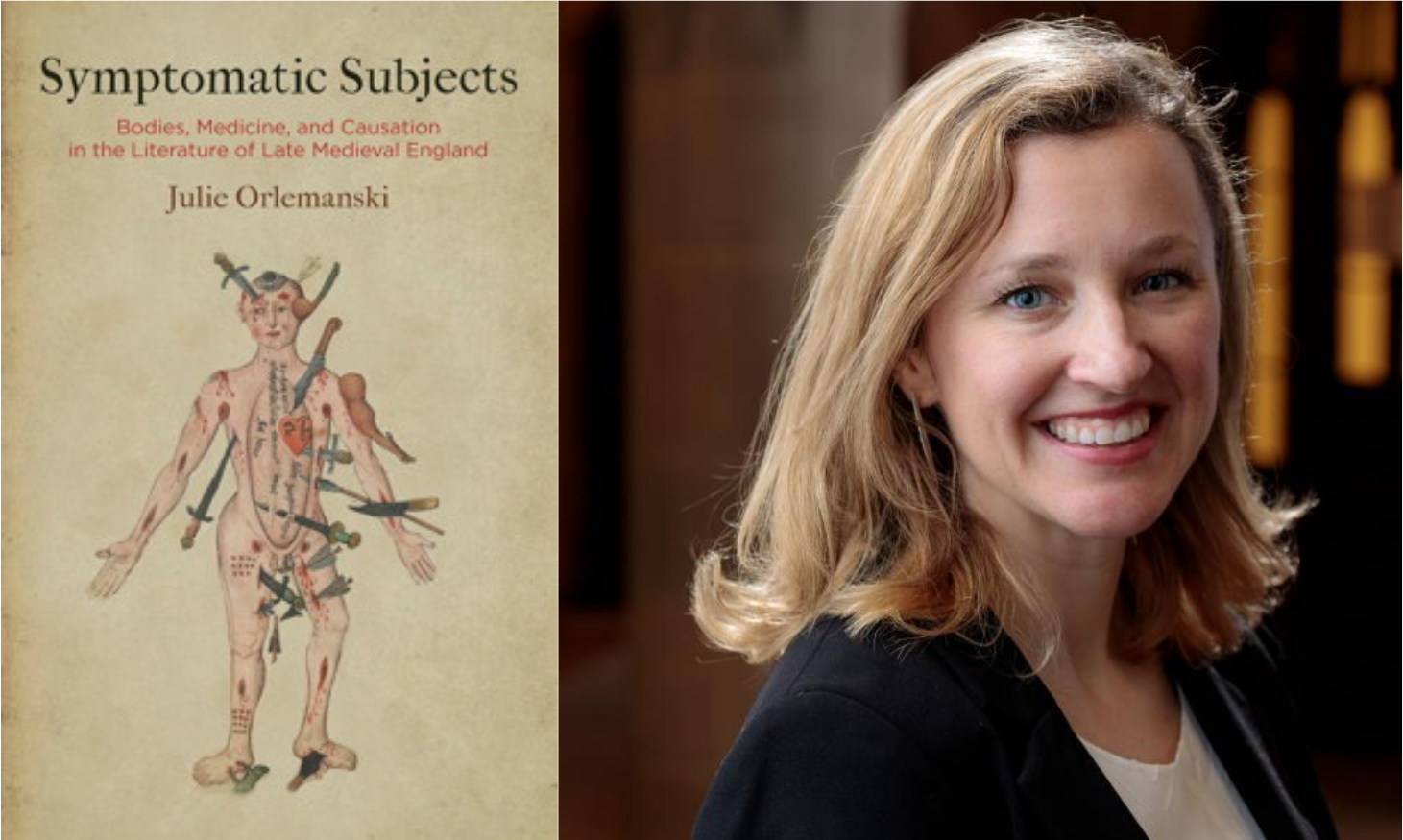Julie Orlemanski’s Symptomatic Subjects: Bodies, Medicine, and Causation in Late Medieval Literature caught our attention today—just in time for the virtual book launch this afternoon!
For details on the virtual launch events, including a conversation with Orlemanski and a panel of scholars in response to the text, check our calendar or visit https://english.uchicago.edu/book-launch-symptomatic-subjects.
In this case, judging the book by its cover seems a good way to begin. Joe Stadolnik provides a brief “teaser” in this Twitter thread:
Just in case that doesn’t have you hooked, here’s the publisher’s description:
In the period just prior to medicine’s modernity—before the rise of Renaissance anatomy, the centralized regulation of medical practice, and the valorization of scientific empiricism—England was the scene of a remarkable upsurge in medical writing. Between the arrival of the Black Death in 1348 and the emergence of printed English books a century and a quarter later, thousands of discrete medical texts were copied, translated, and composed, largely for readers outside universities. These widely varied texts shared a model of a universe crisscrossed with physical forces and a picture of the human body as a changeable, composite thing, tuned materially to the world’s vicissitudes. According to Julie Orlemanski, when writers like Geoffrey Chaucer, Robert Henryson, Thomas Hoccleve, and Margery Kempe drew on the discourse of phisik—the language of humors and complexions, leprous pustules and love sickness, regimen and pharmacopeia—they did so to chart new circuits of legibility between physiology and personhood.
Orlemanski explores the texts of her vernacular writers to show how they deployed the rich terminology of embodiment and its ailments to portray symptomatic figures who struggled to control both their bodies and the interpretations that gave their bodies meaning. As medical paradigms mingled with penitential, miraculous, and socially symbolic systems, these texts demanded that a growing number of readers negotiate the conflicting claims of material causation, intentional action, and divine power. Examining both the medical writings of late medieval England and the narrative and poetic works that responded to them, Symptomatic Subjects illuminates the period’s conflicts over who had the authority to construe bodily signs and what embodiment could be made to mean.
To purchase the book in the US, visit the University of Pennsylvania Press website. (Currently at reduced price: Get 40% off all titles plus free shipping with discount code HOLIDAY20-FM at checkout [U.S. only])
Until December 13, Orlemanski’s book is available at the same discount from the Penn Press NWSA Virtual Store.
Customers in North and South America and the Caribbean: Browse through titles throughout this NWSA virtual store, and once you’re ready to check out, enter NWSA40-FM in the promo code field on the shopping cart page for 40% off plus free shipping!
All other customers: Order online at combinedacademic.co.uk and use discount code CSPENN40 at checkout to receive a 40% discount.

0 thoughts on “Symptomatic Subjects”